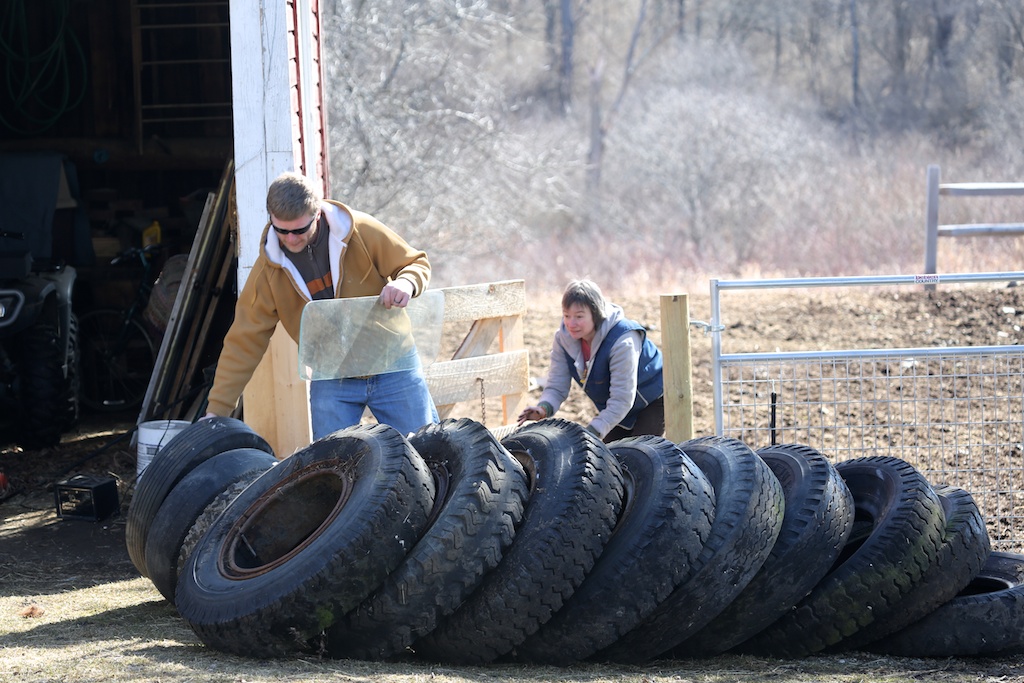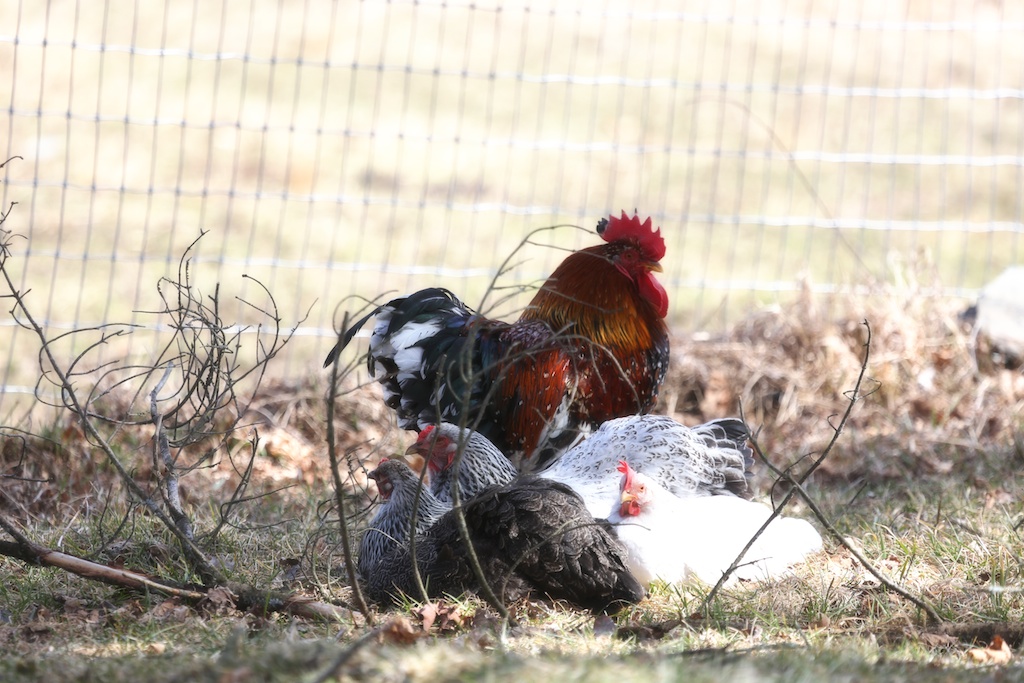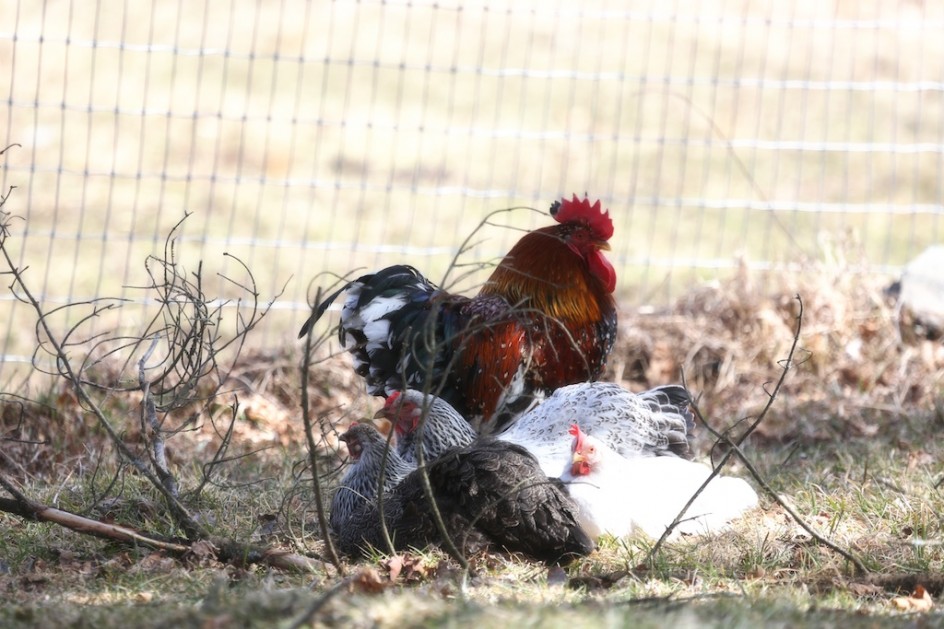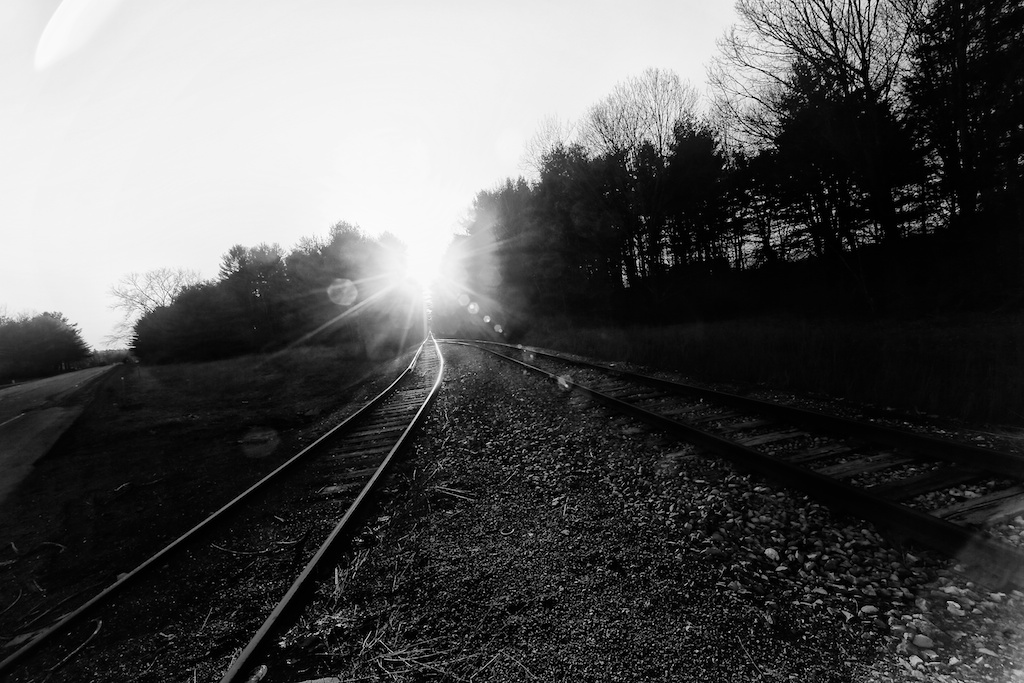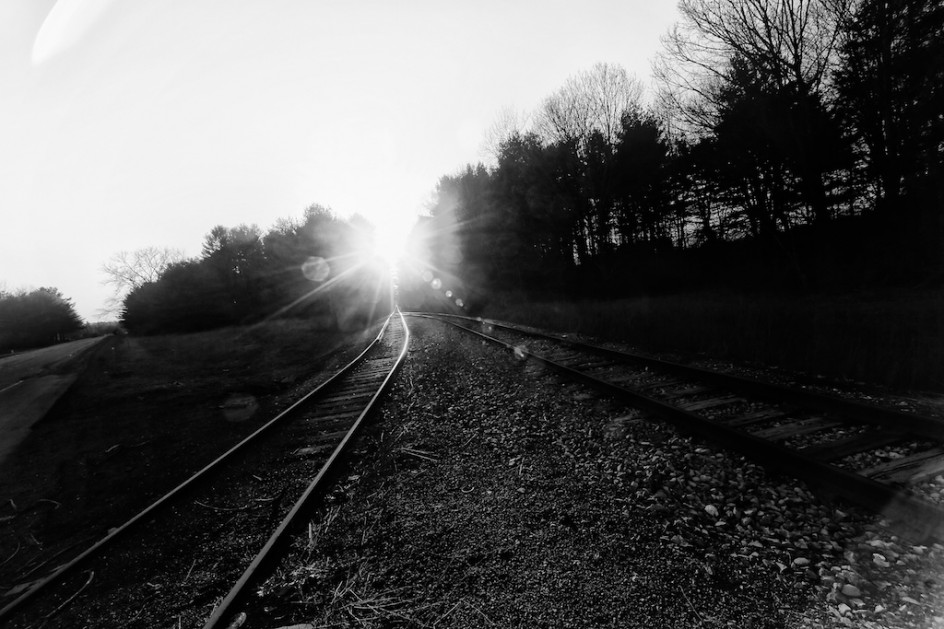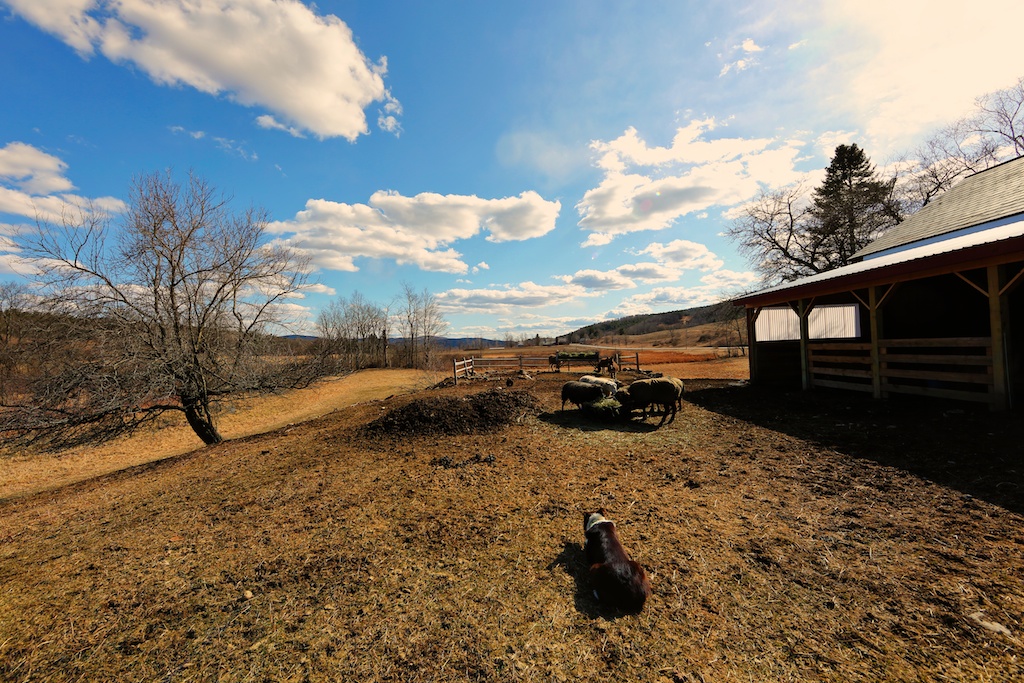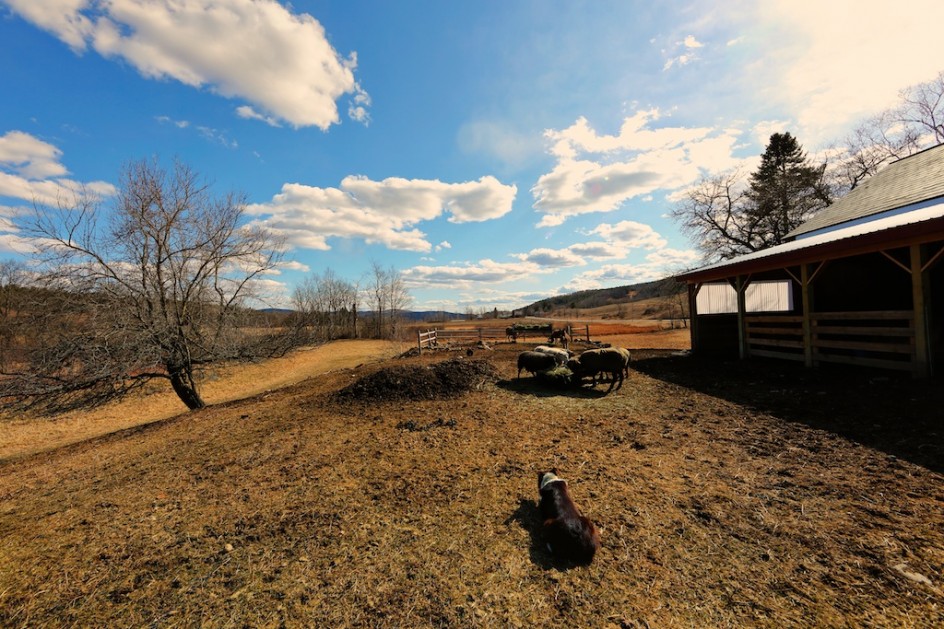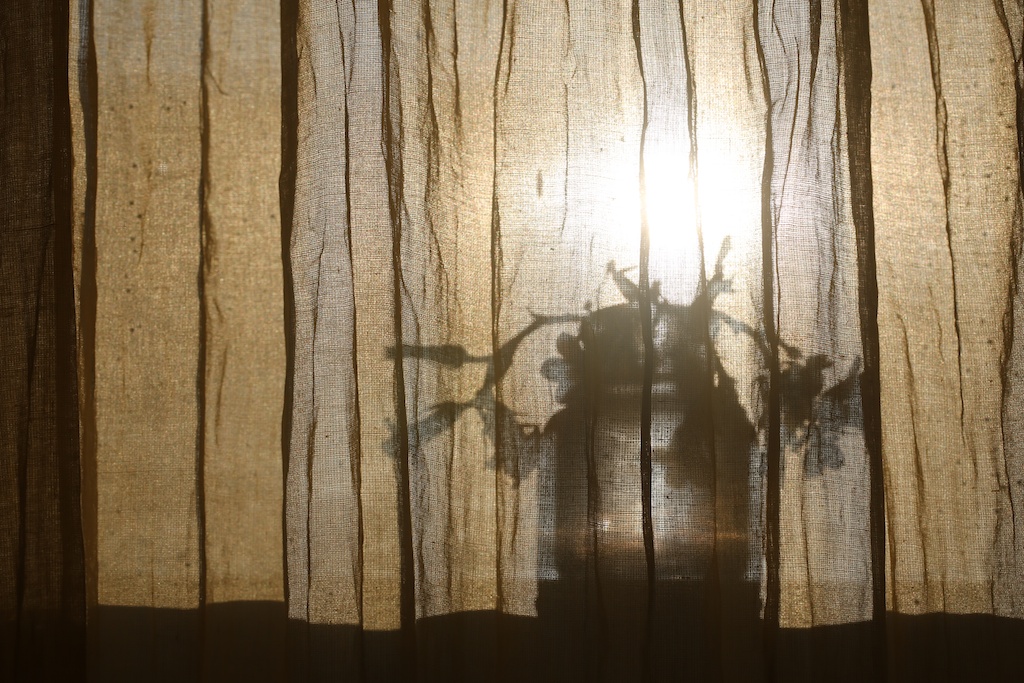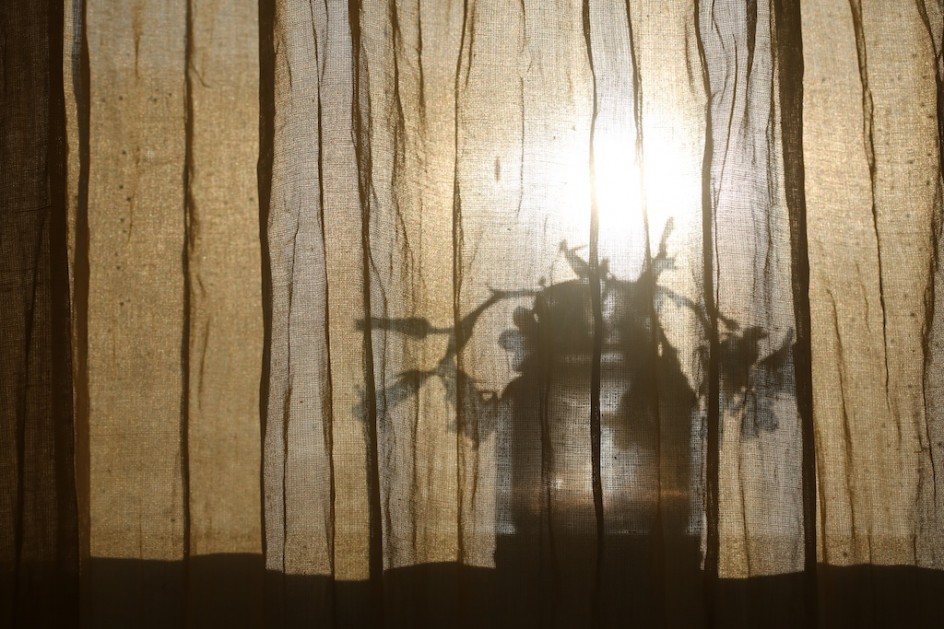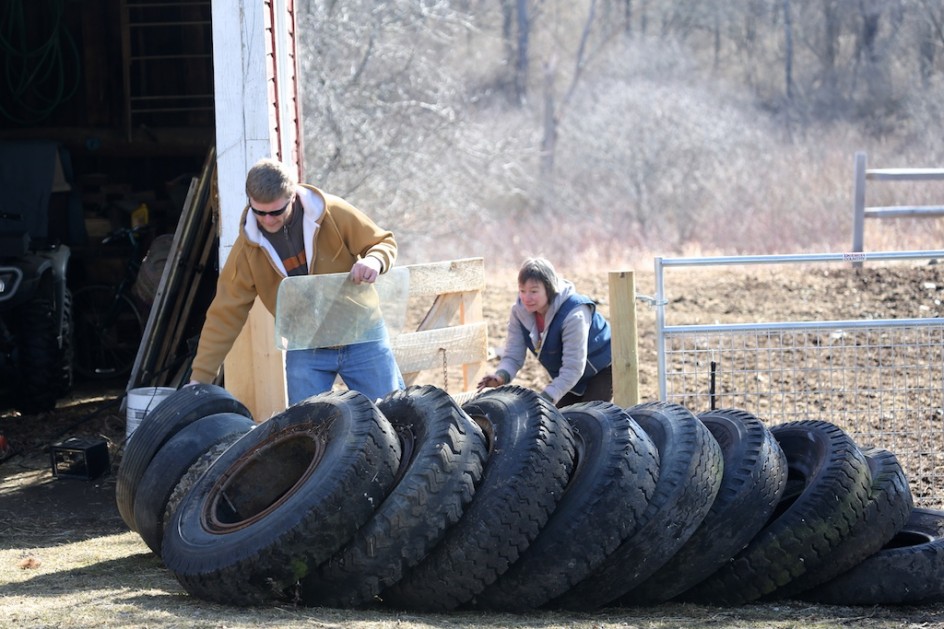
Maria and our friend Ben Osterhaudt and I rolled our tires from behind the barn out to Ben’s truck, where we took them unceremoniously out to the dump and I paid 18 dump stickers to turn them over to Washington County. It was hard work, but they rolled away quickly, water and mud sloshing out of them every step of the way. I was a little sad. I loved photographing them, especially in the snow, they added a lot of character to the farm and Red loved to hide behind them and peer out at the sheep. But I also love the new view in the pasture, it has opened up.
I have studiously avoided arguments about three things in my life – religion, politics and art. People who argue about these things almost never change anyone’s mind or their own, they make a lot of noise, but it is to me a kind of wheel spinning that get nowhere and accomplishes nothing. The tire issue does have me shaking my head a bit. Ever since I posted photos of the tires – they had been on the farm for decades and I felt curiously attached to them – people have been upset about them, criticizing them, angrily denying they are art, warning about the many dangerous diseases and problems tires can cause, from mosquitoes to the West Nile Virus to infections, rats, mice, snakes and encephalitis. I was shocked to see how controversial and disliked my tires are – they are being trashed on my Facebook Page as I write this, even on the eve of Easter. I wonder if there is a “left” or “right” position on old tires, or whether this is one of those things that transcends politics.
On the blog, I referred to the tires as “farm art,” and this grated on a number of people. They saw me as misguided and tasteless. They told me flat out that I was just wrong. I was informed by a number of people that my tires were not art, but trash, and dangerous trash at that. This raises my eyebrows. So far as I know, Florence Walrath and her family managed to get through their lives intact even though they were just yards from these tires for generations, and if tires were as dangerous as people were telling me, I wonder that there are any people alive on the Washington County farms I photograph. There are piles of tiles holding down sileage and left over from dead tractors everywhere, much bigger piles – thousands of tires high – than my sorry little mound. I wish I could ask Florence Walrath about this. Her journals record all sorts of injuries and death – horses killed an awful lot of people back then, one way or another and so did fires and falling trees – but no record of tire deaths or injuries.
Art is personal, individual, and of course, controversial. The reason I loved my tires and referred to them as “farm art” was evolutionary. For years now, one of my favorite things in the world has been going into farms and photographing the barns, animals and the farmers there. At first, I was quite shocked to see how ugly real farms are, how scattered with junk – cannibalized trucks, rotting metal cans and canisters, ghostly old tractors, piles of debris and manure, and yes, tires, tires, tires everywhere. I had always thought of farms in the pastoral way calendars and Hallmark cards show them – green pastures, clean cows, beautiful red barns. Farms are like that in nearby Vermont quite often, mostly because many are owned by New Yorkers. Farmers can rarely afford to spend money to fix their farms up, and if you see a stinky farm with tires in Vermont, you know it is a real one.
I have found that the most amazing structures pop up on farms – tire statues, rows of tractors, magnificent old trucks left to rot for their spare parts, rusting cans, plows and rakes, machine engines lined up like soldiers on the march. The cows themselves are not especially pastoral, they are covered in drool, mud, and manure and dirt, shrouded in flies and gnats and very rich odors. Barn cats and pipes are everywhere. This came to seem admirable to me, very authentic to me, a kind of genuine art in my eyes, as compelling as many of the sculptures I have seen in museums. I came to love the chaos and mess of the farms. I thought of writing a book called “the art of the farm,” but I knew no one would publish it.
These very necessary creations spoke of much blood and sweat, of a way of life. They were much more beautiful to me than the pastoral Vermont farms on postcards, perhaps that is because I have a decidedly curious way of looking at things.
But the tires were definitely art for me, and I do regret that it seems to make some people queasy. Before the Internet, tires were a private matter. Still, I put the photos up, and this is a fine discussion for me, nobody is really angry and it doesn’t seem significant, even to me. I am tickled that people are actually thanking me for removing the tires, it was that important to them.
I am sorry to send my tires off, they were a very old and enduring part of this farm, a reminder to me that real farmers and handymen and tractor drivers did real work here. The tires were my connection to them, they have been here in one form or another (we found some wooden tires) since 1840. Ironically, it was my own aesthetic instincts that doomed my pile of tires. I might call them “farm art,” and wax euphoric about them, but they blocked the nice landscapes I like to photograph, the open skies I like, and this an important thing to a man living on a farm who is not a farmer and thus gets rid of old things and buys new ones, something no true farmer ever does. Ruining my photos is worse than disease and unsightliness.
A real farmer would never get rid of 18 perfectly good tires with strong threads, that would be unthinkable. Their tires would hold tarp and canvas down, shore up collapsing barn doors, block pasture gates (sometimes even double as flowerpots), be stuffed between gaps in fences, be given out to neighbors whose tires had gone flat, or sold to scrappers for quarters one day.
I have learned to never think I am right about these things, or about arguments. I can only be honest about how I feel. I think it was E.B. White who said one man’s art is another man’s trash. Or maybe it was me. I think it is so great that people can get so stirred up about a pile of tires. This is the passion of people, I think, so much a part of our nature. The tire pile will always be a kind of art to me, as will all the junk I photograph on the real farms of real farmers. One man’s trash is another man’s art.

